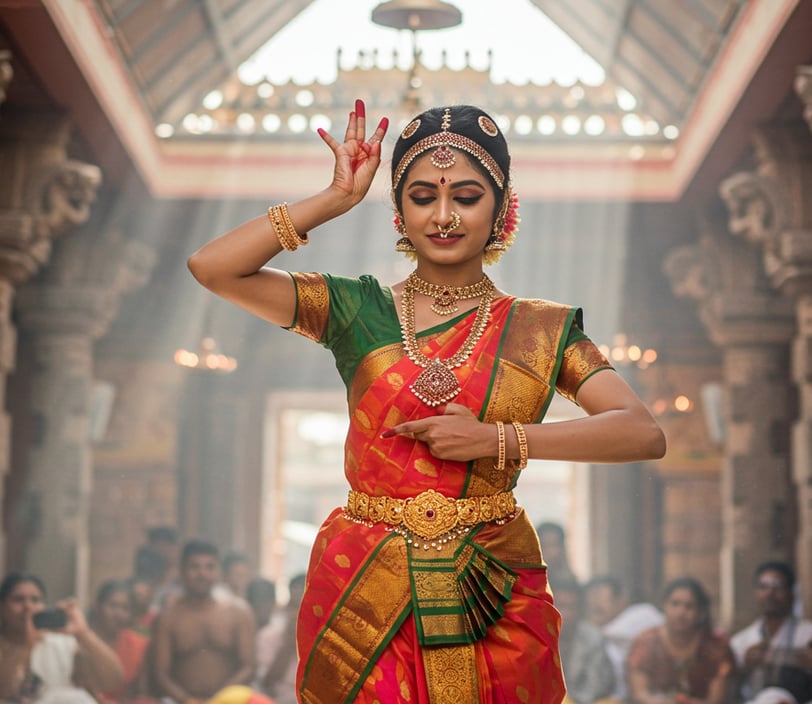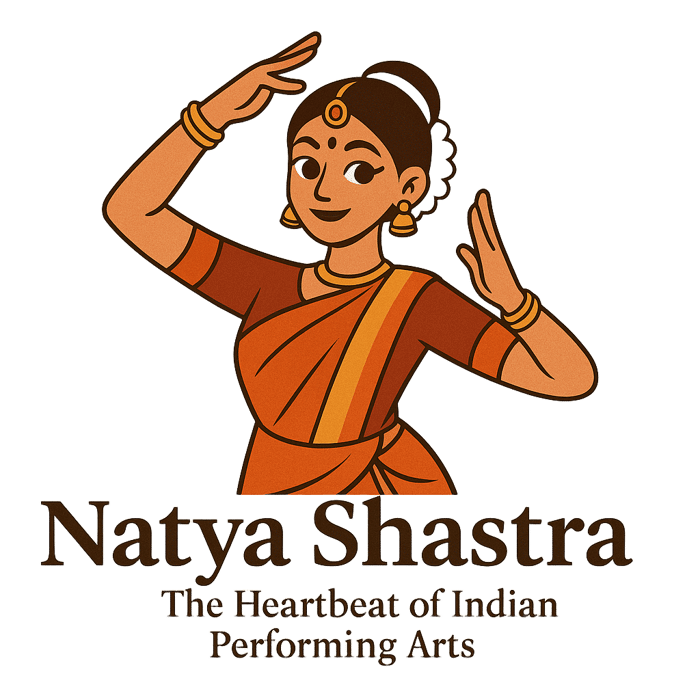Exploring the Depths of Nāṭya Śāstra in Indian Performing Arts
The Nāṭya Śāstra, attributed to sage Bharata Muni, is a foundational text detailing dance, drama, and music. This ancient treatise serves as a comprehensive guide, exploring dramatic composition, stage design, acting techniques, and the integration of music, making it essential for understanding Indian performing arts.
5/8/20243 min read


🎭 Exploring the Depths of Nāṭya Śāstra in Indian Performing Arts
The Nāṭya Śāstra, a timeless Sanskrit treatise attributed to the sage Bharata Muni, stands as the most revered and influential text in the domain of Indian performing arts. Far more than a technical manual, it is a philosophical, aesthetic, and practical guide that has shaped the cultural and artistic landscape of India for over two millennia.
📖 A Foundation Rooted in Divinity and Art
Composed between 200 BCE and 200 CE (with some theories suggesting an even broader timeframe), the Nāṭya Śāstra is believed to have emerged from a divine origin. According to tradition, Brahma, the creator god, distilled elements of the four Vedas to create a fifth Veda—Nāṭya, the art of drama—so that the wisdom of the scriptures could be communicated to all, regardless of caste or status, through performance. He entrusted this knowledge to Bharata, who composed the Nāṭya Śāstra and trained a group of performers to bring it to life.
This legend underscores the sacred status of performing arts in Indian culture, where dance, drama, and music are not mere entertainment, but spiritual practices that reflect universal truths and evoke deep emotional resonance.
🎶 An Encyclopedic Guide to the Performing Arts
The Nāṭya Śāstra spans 36 chapters and over 6,000 verses, covering virtually every aspect of the performing arts. Its depth and range are astounding, touching upon:
Dramatic Composition (Nāṭya-Vṛtti): Detailed analysis of plot structure, character types, and narrative techniques, offering a blueprint for classical Indian drama and storytelling.
Acting Techniques (Abhinaya): A comprehensive system for expressing emotion through body language, gestures (mudrā), facial expressions (bhāva), voice modulation, and movement. This system forms the basis of classical Indian acting and dance styles.
Stage Design and Architecture (Ranga): Guidelines for constructing performance spaces, including the size, layout, acoustics, and ideal audience arrangement—demonstrating an advanced understanding of spatial and aesthetic dynamics.
Costume and Makeup (Aṅga-Racana): Symbolic use of color, costume, and ornamentation to convey mood, character, and social status—laying the groundwork for the richly stylized visual language seen in Indian classical theater and dance.
Music and Rhythm (Sāṅgīta): The integration of vocal music, instrumental accompaniments, rhythm cycles (tāla), and melodic modes (rāga) into performance, highlighting how music enhances emotional expression and storytelling.
🎨 The Essence of Rasa – Evoking the Emotional Spirit
At the heart of the Nāṭya Śāstra lies the revolutionary Rasa Theory—a framework that explains how artistic expression evokes emotional experiences in the audience. The text identifies eight (later nine) primary rasas, or emotional flavors, such as:
Śṛṅgāra (love),
Karuṇa (compassion),
Vīra (heroism),
Raudra (anger),
Bhayānaka (fear),
Bībhatsa (disgust),
Hāsya (laughter),
Adbhuta (wonder),
Śānta (peace – added later)
A successful performance, according to Bharata, is one that skillfully stirs these emotions in the hearts of its viewers, creating a shared, transformative aesthetic experience.
🌺 Enduring Legacy in Indian Classical Arts
The influence of the Nāṭya Śāstra is far-reaching. Its principles form the bedrock of Indian classical dance styles such as:
Bharatanatyam – with its codified gestures and devotional themes,
Kathak – with its blend of narrative and rhythmic footwork,
Kuchipudi, Mohiniyattam, Odissi, Kathakali, and others—each echoing the structural, expressive, and spiritual principles set forth by Bharata.
Its impact is also evident in Sanskrit drama, traditional theater, musicology, and art education, making it an indispensable guide for students, scholars, and practitioners of Indian arts.
🕊️ A Living Tradition for a Timeless Culture
Even today, the Nāṭya Śāstra is not a static, historical document—it is a living tradition. In dance academies, theater schools, music conservatories, and temples across India and the world, the wisdom of this ancient treatise continues to inform, inspire, and illuminate the path of artistic exploration.
By studying the Nāṭya Śāstra, we not only gain technical mastery over the performing arts but also deepen our understanding of Indian philosophy, aesthetics, and human emotion.
